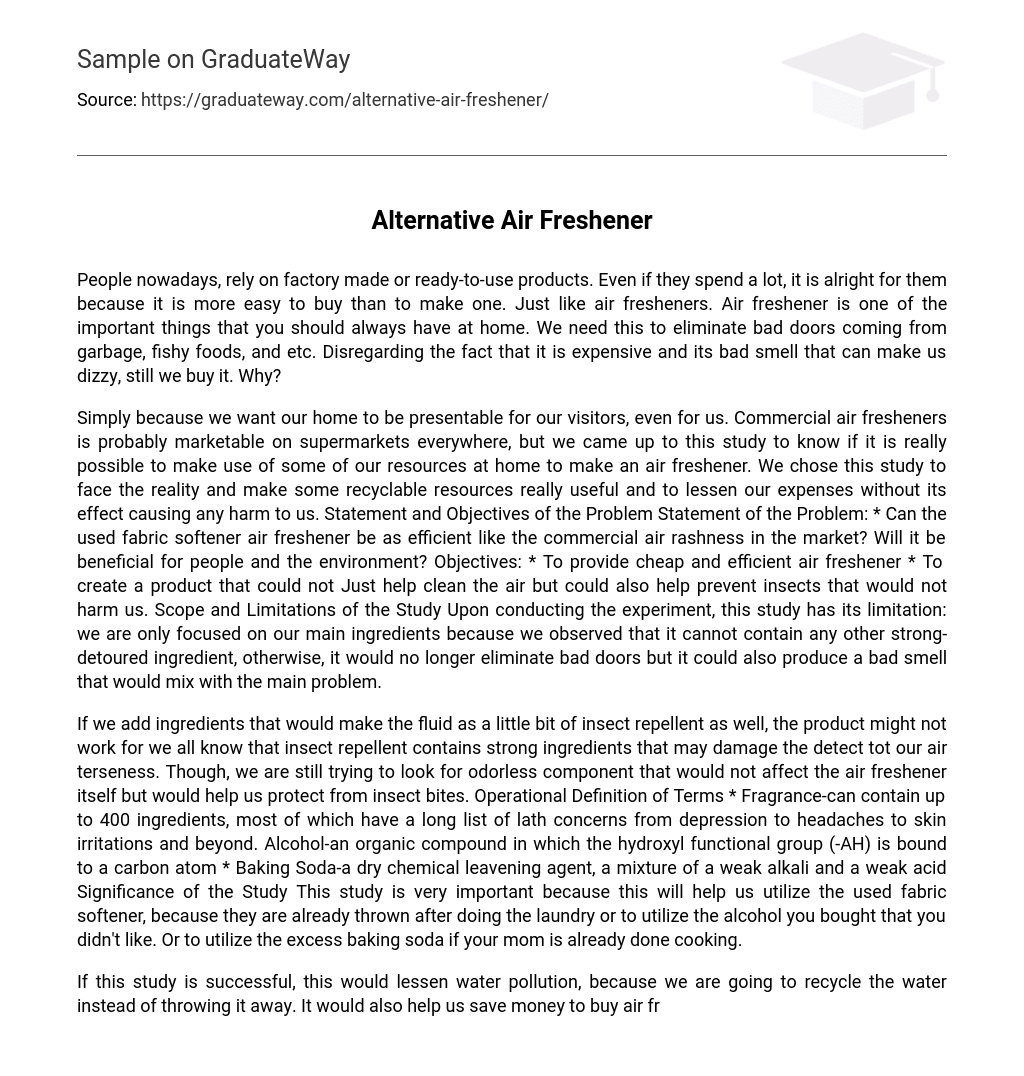Currently, individuals depend on ready-made or pre-made goods, regardless of their price. The justification for this is that purchasing these items is more convenient than creating them oneself. A specific example of such a product is air fresheners, which are necessary in every home to eliminate unpleasant smells stemming from sources like trash and pungent foods. Despite their high cost and potentially overpowering fragrance, we persist in buying them. What is the reasoning behind this choice?
Our goal was to develop an inexpensive and efficient air freshener that not only purifies the air and keeps insects away but also creates a pleasant ambiance for guests. To accomplish this, we conducted an experiment using household resources to create DIY air fresheners. We emphasized using recyclable materials to minimize costs. However, we restricted our investigation to the main ingredients as we found that incorporating strongly scented elements could result in an unpleasant odor when mixed with the primary ingredient.
If we incorporate ingredients that give the liquid the ability to repel insects, there is a possibility that the product will not be effective because insect repellents contain strong components that can harm air quality. However, we are still in search of an odorless element that can shield us from insect bites without impacting the air freshener itself. Operational Definition of Terms:
* Fragrance: may consist of up to 400 elements, many of which have various health concerns such as depression, headaches, and skin irritations.
* Alcohol: an organic compound containing a hydroxyl functional group (-AH) attached to a carbon atom.
* Baking Soda: a dry chemical agent for leavening consisting of a mild alkali and a weak acid.
The significance of this research lies in its potential to help us utilize discarded fabric softener typically disposed of after laundry or make use of unwanted alcohol. Furthermore, it offers a solution for excess baking soda left unused after cooking.
The success of the study has the potential to reduce water pollution by promoting water recycling instead of disposal. It could also help people save money on costly air fresheners by enabling them to create their own. This would be particularly advantageous for individuals who cannot afford to purchase air fresheners but still desire a pleasant scent in their homes. Furthermore, it might inspire others to investigate more economical alternative products available in the market.





